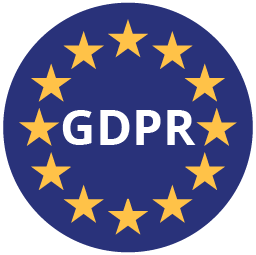Don’t Fear Customer Satisfaction Surveys—Leverage Them!
Overview
Being judged isn’t always pleasant, but it’s a necessary process. No, we haven’t lost our minds—sometimes, a little self-criticism helps us improve. That’s why customer satisfaction surveys are essential for your business. Sometimes, the best way to know if customers are happy is simply to ask.
What Are Customer Satisfaction Surveys?
Customer satisfaction surveys are vital tools for gathering feedback on your products and services. They help identify areas for improvement, enhance the customer experience, and strengthen customer loyalty.
Today’s market is fiercely competitive, and customer perception plays a crucial role in a brand’s reputation. A well-designed survey provides objective data on the user experience and helps shape strategic decisions to enhance the customer journey.
Should You Conduct Customer Satisfaction Surveys?
The answer is yes—don’t be afraid! Implementing satisfaction surveys allows you to:
Identify Areas for Improvement
Surveys give customers a voice to highlight areas needing adjustments or enhancements in your products or services. With this feedback, you can address specific issues and improve the overall experience.
Increase Customer Retention
Customers who feel heard and valued are more likely to stay loyal. Satisfaction surveys demonstrate a brand’s interest in customer opinions, fostering trust, loyalty, and repeat purchases.
Prevent Reputation Crises
Reputation crises often arise when businesses fail to identify problems early. A survey acts as an early warning system, detecting pain points before they escalate on social media or review platforms.
Optimize Customer Service
If customers face difficulties when interacting with your business, surveys can pinpoint weaknesses in your support channels. This allows for faster response times, clearer communication, and more empathetic customer service.
Many businesses underestimate how much a poor customer experience can hurt their reputation. If your customer service isn’t up to par, you might be losing business opportunities.
Do you want to know how AI improves your Customer Service?

Key Elements of a Great Customer Satisfaction Survey
Keep It Short and Clear
Nobody likes long surveys. To maximize response rates, ensure questions are concise, relevant, and avoid unnecessary repetition.
Use a Mix of Open and Closed Questions
- Multiple-choice questions provide structured, easy-to-compare data.
- Open-ended questions allow customers to share detailed opinions.
Combining both types offers a comprehensive understanding of their experience.
Personalization
Every customer is unique, and so is their experience. Tailoring survey questions based on customer profiles enhances relevance and provides specific insights for improvement.
Automated Distribution
The timing of your survey matters. Digital tools help send surveys at the right moment—after a purchase, a customer support interaction, or any other critical touchpoint—to capture fresh, accurate feedback.
Incentives
Offering a discount, a gift, or a chance to win a prize can significantly boost response rates. A well-thought-out incentive encourages customers to participate.
What Do Customer Satisfaction Surveys Measure?
Surveys evaluate key performance indicators such as:
Customer Satisfaction Score (CSAT)
CSAT measures how satisfied customers are after a specific interaction, such as a purchase or service experience.
Typical Question: "How satisfied are you with our service?"
Scale: 1-5 or 1-10
Benefit: Identifies areas that need improvement.
CSAT is a core metric in Voice of the Customer (VoC) programs, helping businesses analyze customer feedback and implement data-driven improvements.
Net Promoter Score (NPS)
NPS assesses how likely customers are to recommend your brand to others.
Typical Question: "How likely are you to recommend our company?"
Scale: 0-10
Benefit: Predicts brand loyalty and business growth.
Customers are categorized as:
- Promoters (9-10): Loyal customers who actively recommend your brand.
- Passives (7-8): Satisfied but not engaged.
- Detractors (0-6): Unhappy customers who might damage your reputation.
The final NPS score is calculated by subtracting the percentage of detractors from the percentage of promoters.
Customer Effort Score (CES)
CES measures how easy or difficult it is for customers to interact with your business, such as resolving issues or using your services.
Typical Question: "How easy was it to resolve your issue?"
Scale: 1-7
Benefit: Identifies friction points and optimizes customer interactions.
Comparison of CSAT, NPS, and CES
| Metric | Objective | Key Question | Scale | Main Benefit |
|---|---|---|---|---|
| CSAT | Measures satisfaction with a specific interaction. | "How satisfied are you with our service?" | 1-5 or 1-10 | Identifies areas needing improvement. |
| NPS | Evaluates customer loyalty and likelihood to recommend. | "How likely are you to recommend us?" | 0-10 | Predicts business growth and brand perception. |
| CES | Assesses the effort required for customer interactions. | "How easy was it to resolve your issue?" | 1-7 | Identifies obstacles in the customer experience. |
Satisfaction Surveys: A Powerful Tool for Growth
Customer satisfaction surveys are not just a simple questionnaire—they are a strategic tool for understanding and improving your relationship with customers.
By implementing surveys effectively, you can:
Optimize the customer journey
Boost customer retention
Stand out from the competition
Ready to Take Action?
If you haven’t yet incorporated satisfaction surveys or employee statisfaction surveys into your strategy, now is the time. At indigitall, we help businesses automate the survey process and analyze results to enhance customer experiences.
Contact us today and discover how we can help you elevate your business!



